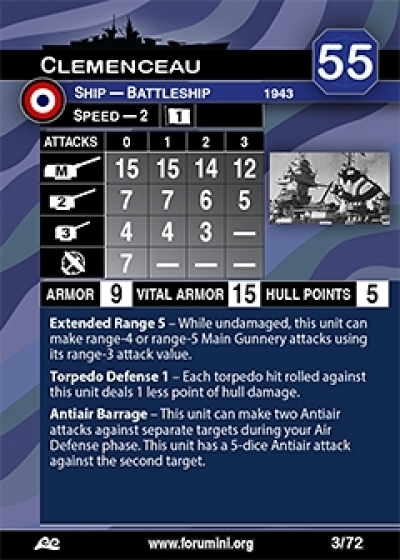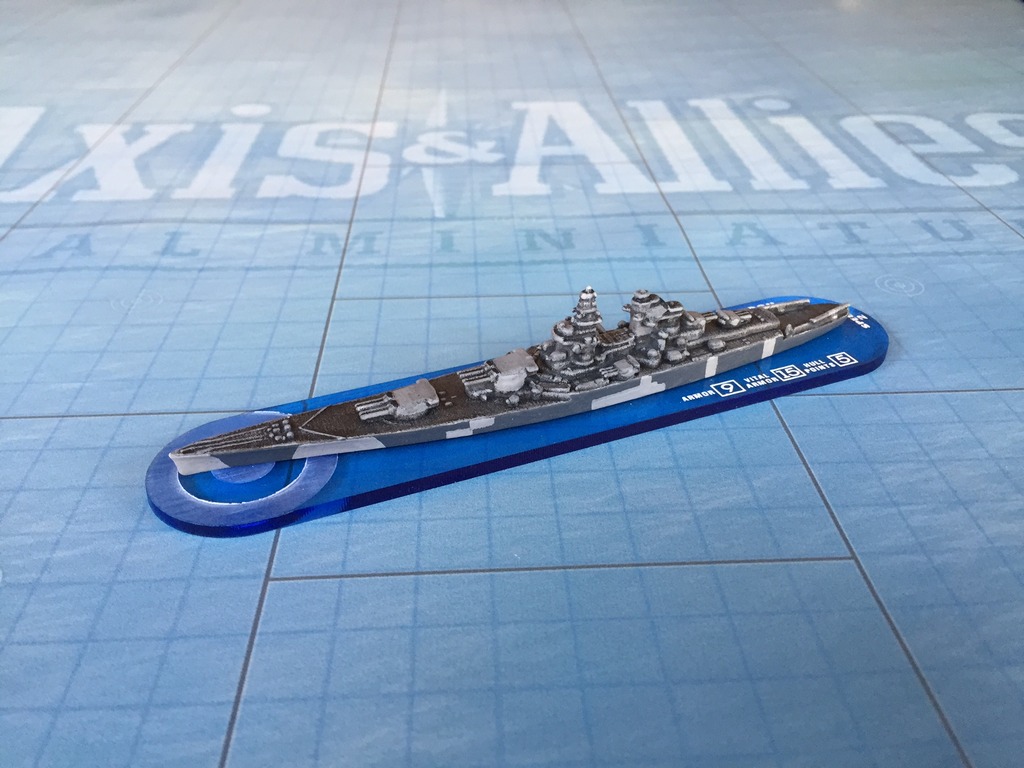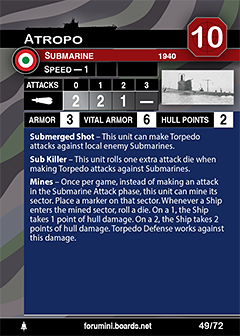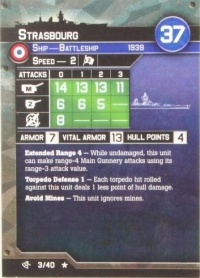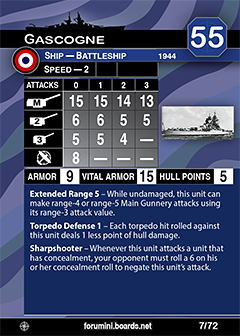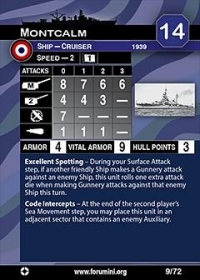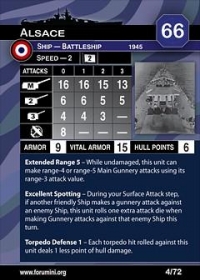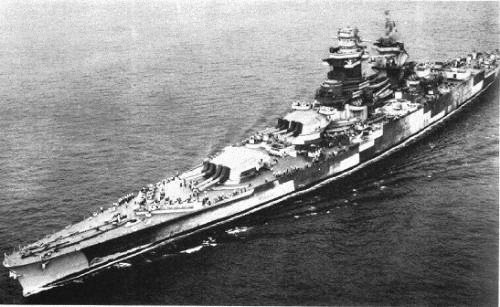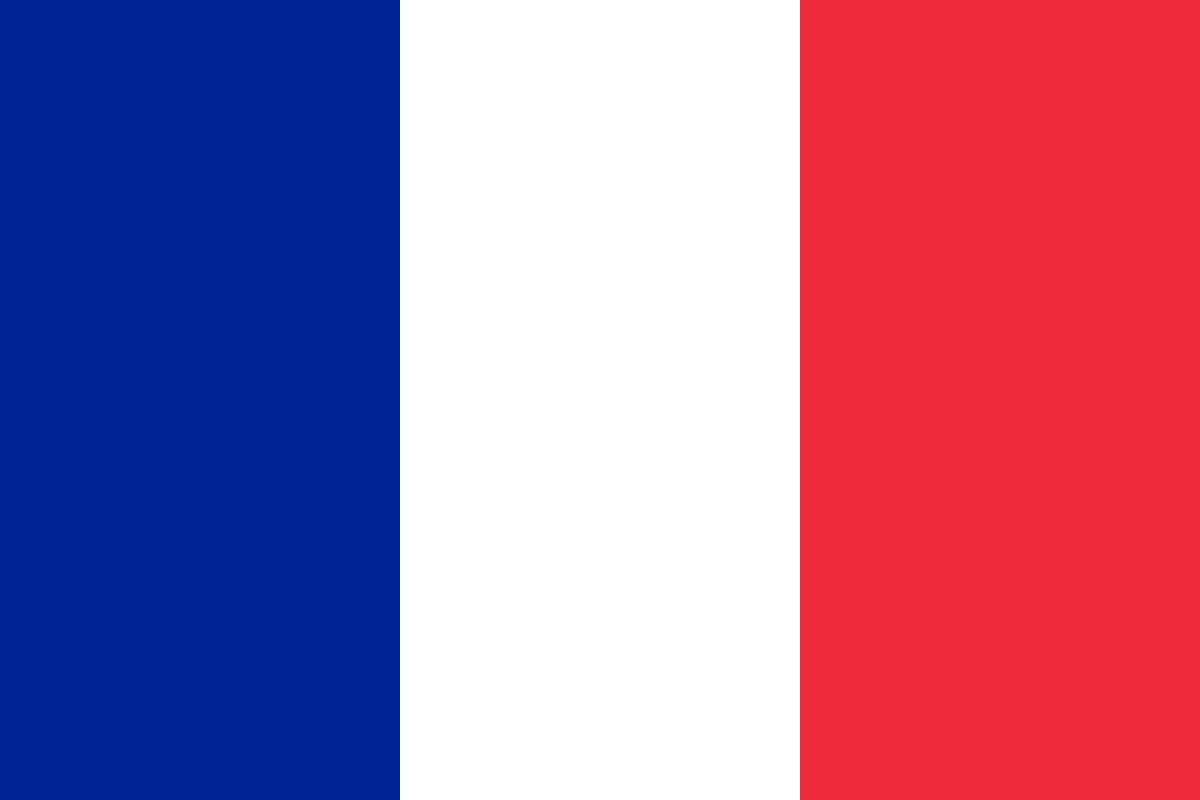Prototype: Clemenceau was laid down on 17 January 1939 at the Salou No. 4 dock in Brest, directly after Richelieu had been launched from that dock earlier that day. Owing to the increased tensions with Germany, work on the ship was expedited and she was slated to be launched in 1941, with completion projected for late 1943. On 28 September 1939, work was halted temporarily as the French had begun large-scale mobilization for the war with Germany, which reduced the available workforce. What men were available were allocated to Richelieu, since she was nearing completion. The shipyard resumed work on 6 December during the "phony war", but progress was slow and only 10 percent of the hull—a length of about 130 m (426 ft 6 in)—had been assembled by 10 June, when work again halted in the wake of German victories. When German forces approached Brest, the shipyard workers flooded the drydock. The ship was seized by the Germans, renamed Schlachtschiff R (Battleship R), with consideration briefly given to completing the ship, but shortages of materials and shipyard workers rendered it an unrealistic project. The hull was floated out in 1941 so the slipway could be used for other purposes. According to the historians John Jordan and Robert Dumas, the hull was then moored in front of the U-boat pen in Brest,[59][60] though Henri Le Masson states that she was towed to Landévennec in the roadstead of Brest.[61] Allied bombers sank the hulk on 27 August 1944 and after the war, the navy placed the wreck for sale on 23 February 1948. There were no buyers, so the navy refloated the vessel to clear the harbor bottom and while under tow it broke in half and sank again. Salvors eventually purchased the wreck on 1 August 1951.
Class History: The Richelieu-class battleships were the last and largest battleships of the French Navy. They left service in the 1960s. They remain the largest French-built warships. They were designed in the 1930s to counter the threat of the Italian Vittorio Veneto-class battleships. Richelieu-class ships were essentially scaled-up versions of the preceding Dunkerque class. They featured a main battery of eight 380 mm (15.0 in) guns in two quadruple turrets in forward superfiring positions.
Four Richelieu-class ships, of three different subclasses, were designed over the course of three construction programs, in 1935, 1936, and 1938. Only three were laid down. Only the first two, Richelieu and Jean Bart, were completed. They saw service during World War II, first under Vichy control in Dakar (1940) and Casablanca (1942), then under Allied control. Richelieu participated in British Home Fleet and Eastern Fleet operations and supported French forces' return to Indochina in late 1945. Jean Bart was not completed until the 1950s and took part in the operations off Port Said (Egypt) during the Suez Crisis in 1956. Richelieu was scrapped in 1968 and Jean Bart in 1970.
Four Richelieu-class ships, of three different subclasses, were designed over the course of three construction programs, in 1935, 1936, and 1938. Only three were laid down. Only the first two, Richelieu and Jean Bart, were completed. They saw service during World War II, first under Vichy control in Dakar (1940) and Casablanca (1942), then under Allied control. Richelieu participated in British Home Fleet and Eastern Fleet operations and supported French forces' return to Indochina in late 1945. Jean Bart was not completed until the 1950s and took part in the operations off Port Said (Egypt) during the Suez Crisis in 1956. Richelieu was scrapped in 1968 and Jean Bart in 1970.
Country: France is one of Europe’s largest countries. It is bordered by six countries other nations: Germany, Belgium and Luxembourg to the northeast, Switzerland and Italy to the southeast and Spain to the southwest. The United Kingdom borders France via the English Channel. The country is considered to be the gateway to Europe as there are several large international airports (two of these can be found in Paris), ferry terminals and the French rail service.
In 486, Frankish tribes unified under Merovingian kingship. In 843, Western Francia was established from the division of the Carolingian Empire. In 1789, the French monarchy was overthrown, and in 1792, the First French Republic was founded. In 1958, the Fifth French Republic was established.
In 486, Frankish tribes unified under Merovingian kingship. In 843, Western Francia was established from the division of the Carolingian Empire. In 1789, the French monarchy was overthrown, and in 1792, the First French Republic was founded. In 1958, the Fifth French Republic was established.
Item created by: Lethe on 2015-05-31 17:46:30. Last edited by gdm on 2019-11-20 12:20:32
If you see errors or missing data in this entry, please feel free to log in and edit it. Anyone with a Gmail account can log in instantly.
If you see errors or missing data in this entry, please feel free to log in and edit it. Anyone with a Gmail account can log in instantly.


